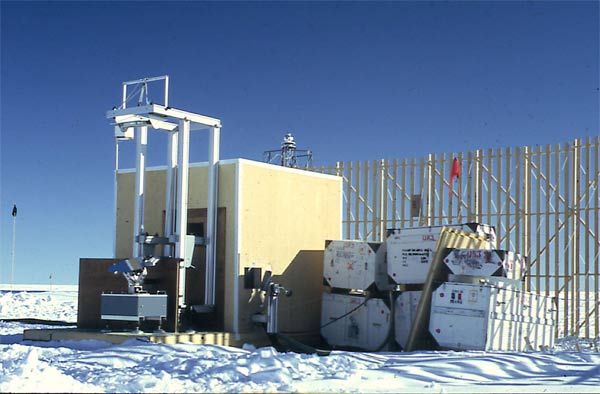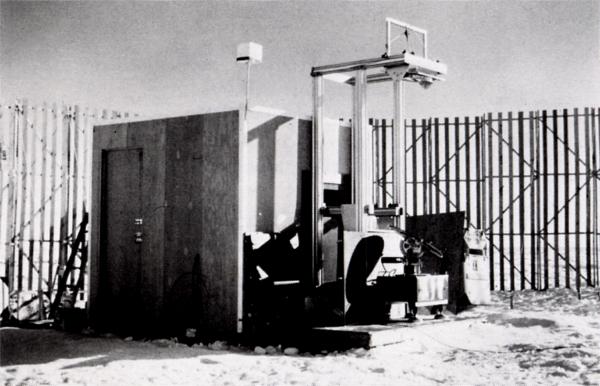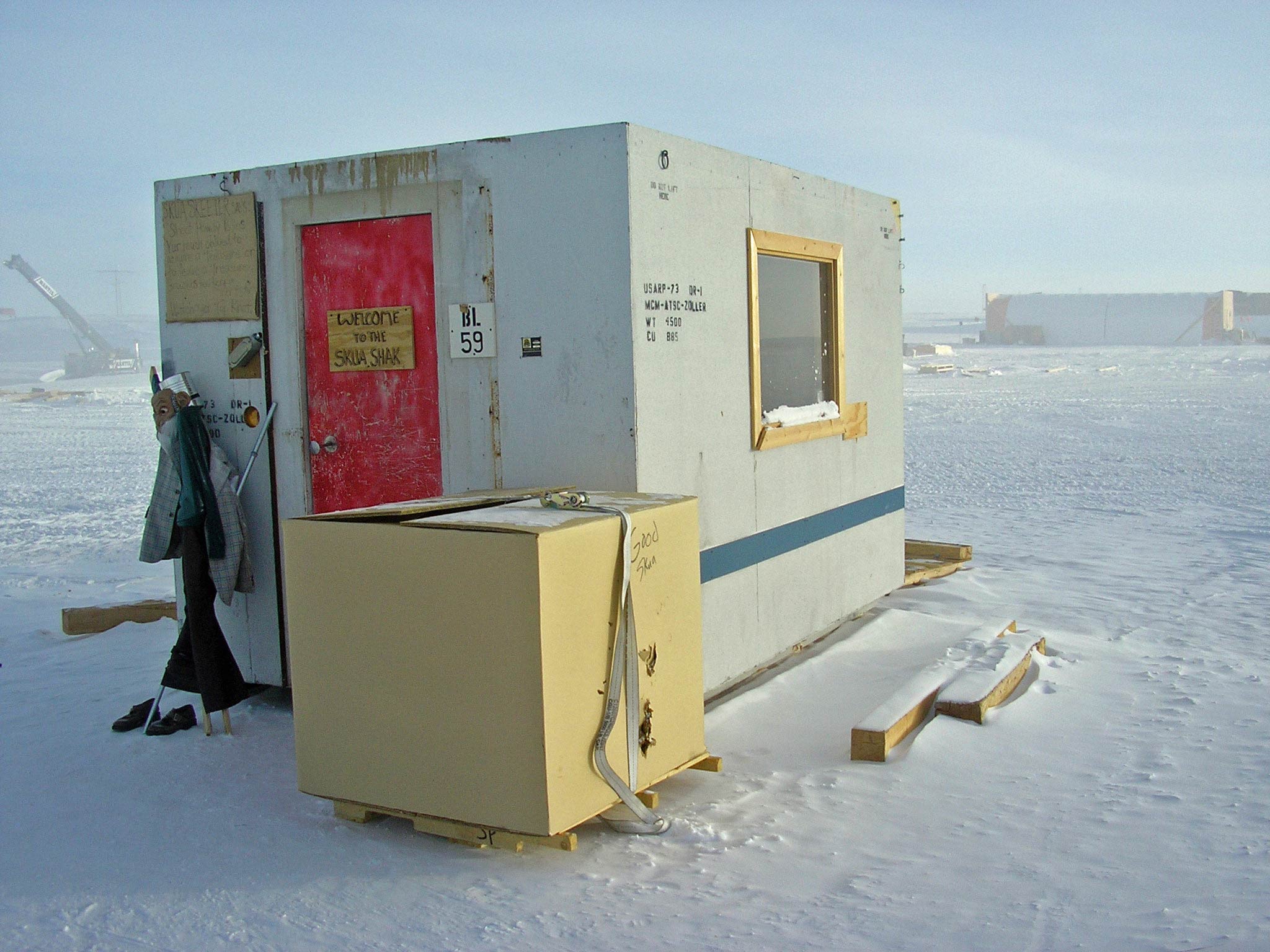EMILIE--the first submillimeter astronomy instrument at Pole

(above photo by François Pajot, with thanks to Denis Barkats)
|
Emilie (Emission Millimetrique) was a 1984-85 collaboration between Marty Pomerantz and several French scientists. The principal investigator was Richard Gispert from Laboratoire de Physique Stellaire et Planetaire, Verrières-le-Buisson, France, whose team included François Pajot. It turned out that only one shipment of liquid helium arrived on a timely basis coinciding with good observation weather. Here's said dewar being delivered to the telescope site, otherwise known as the "Solar Polar" site or Pomerantz Land, five miles east of the station, near the present SPRESSO site. Another full dewar was shipped to McMurdo but then inadvertently returned to ChCh. As a result, Marty took a vote, and the team decided to end the experiment and head back to France for Christmas, rather than wait around for another shipment to make it all the way to Pole. Custom-designed module housing the submillimeter photometer. The bolometers, operated at 1° Kelvin in a double tank helium-four cryostat, cover different bands in the range 300 micrometers to 1 millimeter with an atmospheric transmission of 20 to 90 percent. The lower mirror is the coelostat, and the 45-centimeter fixed primary mirror is at the top of the structure on which the various optical components are mounted. [In 1986-87, CMBR studies based on the Emilie experience were conducted by a Bell Labs team led by Mark Dragovan, Tony Stark and Bob Wilson, at a site near the dome. This time the helium supply system worked better, and the results led to the massive CMBR assault in 1988-89.] References...some of this information including the dewar photo linked above came from Astronomy on Ice; Observing the Universe from the South Pole, by Martin A. Pomerantz, an American Polar Society book printed by the Xlibris Corporation, 2004. The above b&w site photo, caption, and other information came from "Far infrared astronomy at the South Pole," (PDF copy) by M. A. Pomerantz, Antarctic Journal, Vol. XX, No. 5 (1985 review issue). Denis Barkats, François Pajot, and Glenn Grant also helped with the information on this page. But...there's more. It seems that one of the other facilities used by the Emilie team was a sturdy well-insulated ATCO module which had originally been delivered to Pole in 1973 for the Zoller air sampling project (1976 photos). This hut was used (buried or on the surface) for most of the Pomerantz Land operations. More recently, it has been adopted as the skua shack. Below left, my 2005 view of the hut, and below right, a bit of the graffiti documentation.
| |


